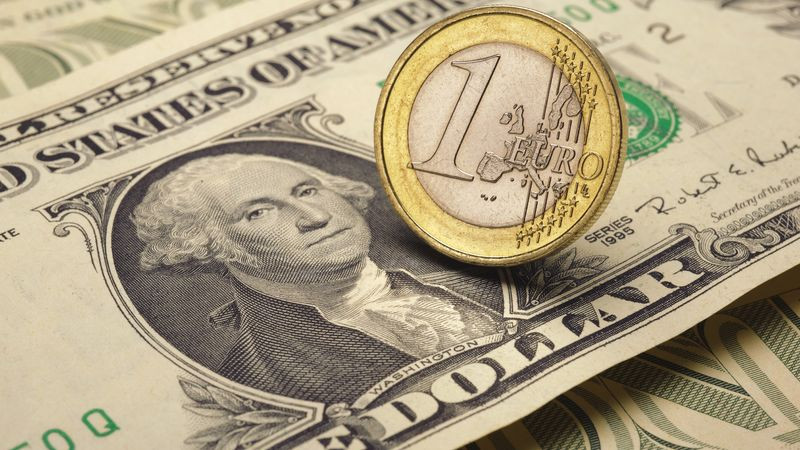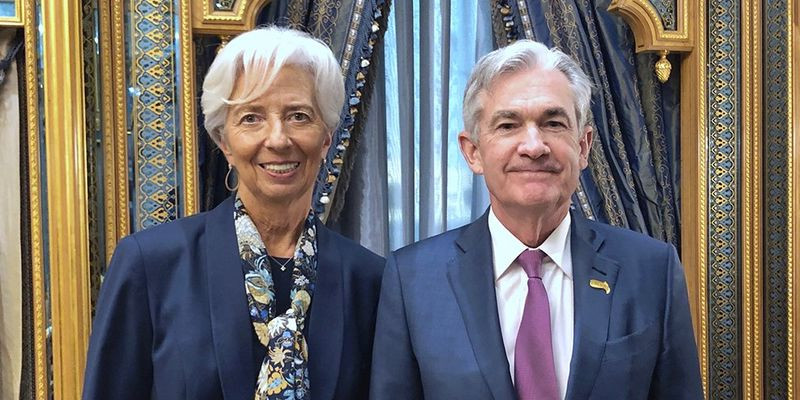The dollar has strengthened against its European counterpart by about 1% since the beginning of the week.
However, the EUR/USD pair is still staying in the range formed almost two weeks ago.
While the greenback benefits from its safe haven asset status, the single currency is under pressure from the divergence between the Federal Reserve and the European Central Bank.
Recall that this year the US central bank has already raised its key rate by 1.5%, to 1.5-1.75%, while the ECB still maintains its discount rate at zero.
Investors are now focused on the third week of July, when the regular meetings of the FOMC and the ECB Governing Council will take place.
The US central bank is expected to raise rates by 75 bp or 50 bp, and its European counterpart will raise interest rates for the first time in a decade.
Some traders are looking further ahead and wondering if a potentially larger ECB move will follow in September, and if the US central bank will take the pause that Fed Chairman Jerome Powell has previously indicated.
According to him, after the July rise, the rate level will be closer to the normal level, which will give the central bank's leadership an opportunity to think about what further actions should be.
The money market is already hinting that the tightening of monetary policy in the United States is not so obvious after December. At the same time, on the long-term horizon, there is a gradual shift towards expectations of a possible rate cut at the end of 2023.
Now the money market puts two possible scenarios of the Fed rate hike in quotes:
1. An increase in the cost of borrowing by 75 bps in July, then by 50 bps in September, then by 25 bps in November and 25 bps in December.
2. Raising the rate by 75 bps in July, then by 50 bps in September and 50 bps in November, and in December there is already a pause.
Such a shift in expectations recently forced the dollar to interrupt a rally that led it to two-decade highs. Against this background, there was talk that the greenback may have passed the peak.
Investors have suspended sales of the US currency for the time being, but they fear that a sharp increase in the US central bank's key rate will not pass without a trace for the national economy.
"The Fed still believes it can draw a fine line between tightening financial conditions and not causing much damage to the economy. We are still not sure that they will be able to do this," State Street strategists said.
The risk of a recession will periodically undermine the dollar's position, but the broader medium-term upward trend in the US currency is likely to persist for some time, analysts at Westpac say.
They predict that the USD index remains in the range of 101-105 for the time being.
"It is unlikely that the greenback will reach its peak until we approach the end of the Fed's tightening cycle, started ahead of schedule," Westpac said.
Since the Fed adheres to the hawkish rate, the dollar will remain strong, analysts at MUFG Bank believe.
"The US interest rate market has lowered expectations for the Fed's final rate from a level close to 4.0% to about 3.5%. These expectations of a dovish shift on the part of the Fed may be offset in the near future, unless there is evidence of an even sharper slowdown in the US economy. Therefore, we believe that it is premature to expect a more stable reversal of USD growth," they noted.
In addition, investors should not forget the lessons of history in order to be too pessimistic about the dollar.
Often, the tightening of monetary conditions in the United States leads to a strong shock in other parts of the world. Such were the defaults in Asian countries that took place in 1997. After the global financial crisis of 2008, we witnessed the debt crisis in Greece, which then spread to almost the entire euro area.
At the same time, the ECB increased the cost of borrowing, which turned into a complete disaster.
Memories of the events of a decade ago are still fresh, but the leaders of the ECB do not tire of emphasizing that things are much better for the weak countries of the bloc now than they were then. In addition, the central bank now has more tools and flexibility.
Part of the measures taken during the pandemic, primarily the support of government bonds through their purchase by the central bank, led to a sense of complacency among investors. The withdrawal of this support increases the likelihood that traders will test the strength of the ECB's determination to avoid the so-called "fragmentation".
ECB leaders argue that they will not allow the yield difference to increase too much, since this not only complicates the implementation of monetary policy measures, but also poses a threat to the stability of the single currency.
Yesterday, the euro could not get support from the comments of ECB President Christine Lagarde in her keynote speech at the Forum on Central Banking in Sintra.
"We intend to raise rates by 25 bps in July. There is an opportunity to raise rates even more in September. If the inflation forecast does not improve, we will have enough information to act faster. After September, a gradual but steady further increase in rates will be advisable," Lagarde said.
"In addressing the problem of fragmentation, the ECB will use flexibility in reinvesting repayments coming under the monetary policy. It was also decided to accelerate the completion of the development of a new tool," she added.
Due to the fact that the head of the ECB did not provide any new information on the way to raise interest rates and a tool to combat fragmentation, the euro weakened against the US dollar by more than 0.6% on Tuesday and ended trading near 1.0518.
The day before, the greenback strengthened against its main competitors by almost 0.5% and finished around 104.25 points, as the decline in key Wall Street indices caused a surge in demand for safe haven assets. In particular, the S&P 500 lost 2.01%, dropping to 3,821.55 points.
The US stock market fell yesterday, tracking alarming signals from the national economy.
According to the Conference Board, the consumer confidence index in the country fell to 98.7 points in June from 103.2 points a month earlier. In addition, the survey showed that expectations for the level of consumer inflation on the horizon of 12 months rose to 8% from May 7.5%. The indicator has reached its highest value since the beginning of observations in August 1987.
This release caused another outbreak of fears about the impending recession, as a result of which US stocks fell in price together, and the dollar went up, receiving support from representatives of the Fed.
"Many are concerned that the Fed may act too aggressively and possibly push the economy into recession. I myself am concerned that if inflation is left unchecked, it will become a serious obstacle and threat to the US economy and further growth. Therefore, the Fed is pressing the monetary brakes by raising interest rates to cool demand," said Mary Daly, president of the San Francisco Fed.
"We are working on this as fast as we can, and hopefully Americans will start to feel some relief in their wallets," she said, adding that she expects the economy to slow down, but not stop growing.
The FOMC will discuss the next major increase in the base interest rate at the July meeting, the head of the Federal Reserve Bank of New York, John Williams, said on Tuesday.
"We have to raise the bid higher, and we need to do it quickly. As for our next meeting, I think an increase of 50 basis points or 75 bp will be discussed," he said.
Comments by Daly and Williams were given a certain rebuff to the recent reduction in expectations of a tightening of the Fed's policy. This added strength to the dollar and put pressure on the EUR/USD pair.
The greenback maintained an upward bias on Wednesday, but stalled around 104.70-104.80. Further, the resistance is located near the weekly high at 105.00 (from June 22). The breakdown of this mark will allow the US currency to revisit the almost 20-year peak in the area of 105.80 (from June 15).
Meanwhile, the EUR/USD pair continued to develop a downward momentum, retreating even further down below the 1.0500 level.
The protective dollar benefited from the fact that investors rushed to seek safe havens amid a decline in stocks around the world due to the growing risk of a global recession.
"We are firmly committed to our instruments to reduce inflation. Is there a risk that we will go too far? Yes. But this is not the biggest risk. The bigger risk is the inability to restore price stability," Powell said on Wednesday, speaking at the ECB forum in Sintra.
Lagarde, in turn, noted that the era of ultra-low inflation, which preceded the pandemic, is unlikely to return.
She added that central banks need to adjust to significantly higher expectations of price increases.
It is assumed that soon the ECB will raise interest rates following the leading central banks that are trying to tame the raging inflation.
However, unlike its European counterpart, the Fed may raise the key rate by 0.75% in July, and by the end of the year, the cost of borrowing in the United States may rise to 4%.
Thus, the differential of interest rates on both sides of the Atlantic in the medium term will continue to support the greenback to the detriment of the single currency.
According to some estimates, in the context of unprecedented high inflation, provoked by rising energy prices and continuing problems with supply chains, the eurozone's GDP may shrink by 1.5%. That is, a recession in the bloc may occur before the end of the year.
In such a scenario, it is hardly worth counting on a vigorous tightening of the ECB's policy, which will support the euro.
The EUR/USD pair needs to rise above 1.0650 in the near future in order for the downward pressure on it to ease. Otherwise, additional losses are likely and the chances of another visit to the June low at 1.0360 will increase.















